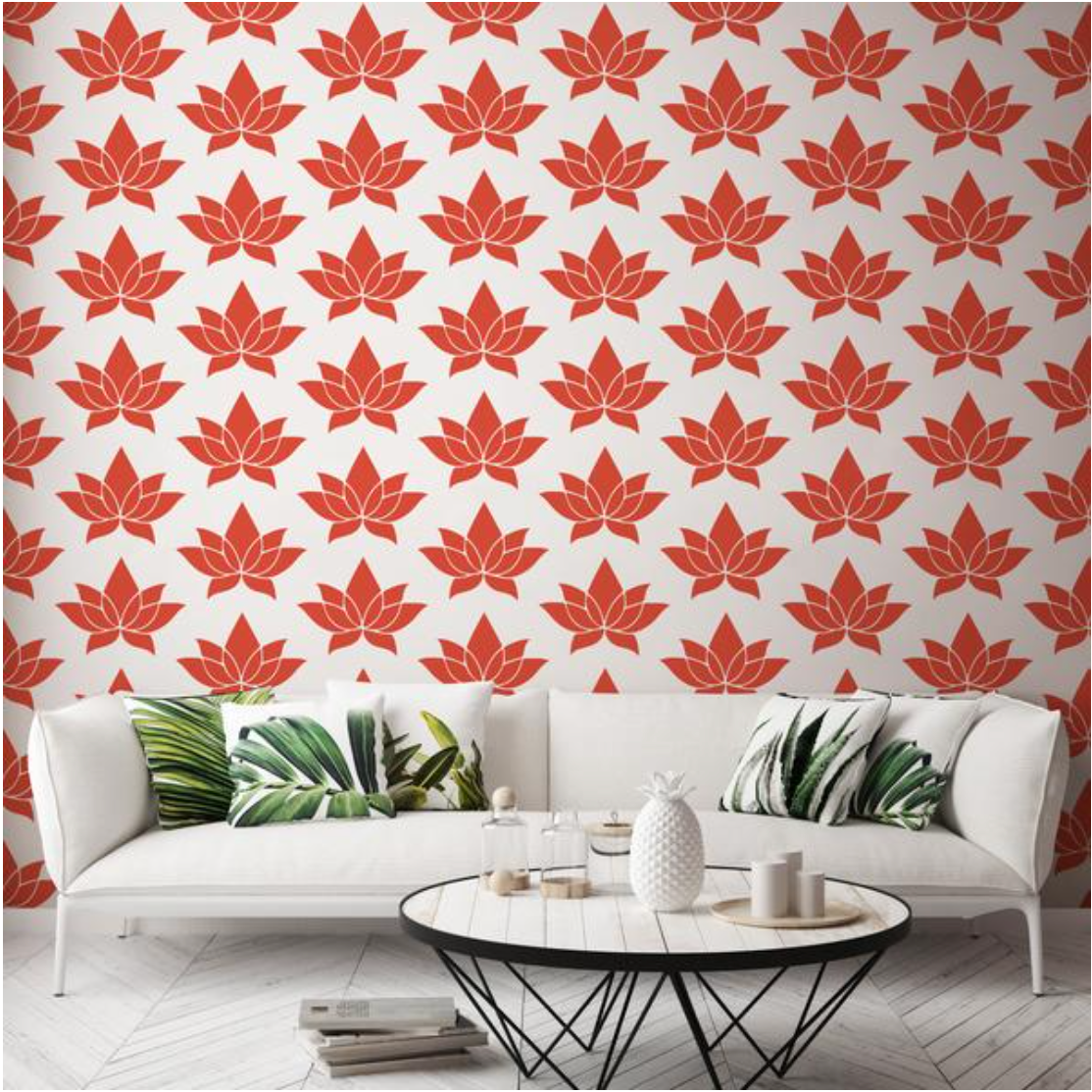The Ultimate Guide to Wallpaper Primer

Wallpapering your living space can be one of the most fun and transformative ways to elevate your interior design. Before you install your new wallpaper, it’s essential to properly prepare the area.
Using a wallpaper primer is the best way to ensure your new wallpaper goes on smoothly and stands up to wear and tear. But how do you decide which wallpaper primer to choose, and how do you use it?
We’re bringing you the ultimate guide to wallpaper primer, including types of primer, when to use one, and how to apply it.
Do You Need a Wallpaper Primer?
Wallpaper primer isn’t always necessary, but in general it’s a good idea. There are lots of benefits to using a primer, including:
- Better adhesion
- Wall protection
- Smoother surfaces
- Protection from stains and moisture
- Better durability
- Easier, smoother removal
If you have bare drywall, newly plastered walls, a glossy paint finish, or any stains and damage, primer is definitely the way to go. But if you have perfectly sealed walls with a non-porous finish, then wallpaper primer may be optional.
Types of Wallpaper Primer
Water-Based Primer
Water-based primers are excellent for unfinished drywall, plaster, and other porous materials. This is because the flexibility of water-based formulas helps to even out surfaces, promoting adhesion and increasing the longevity of your wallpaper.
Water-based primers are also fast drying, odorless, and easy to clean. However, they’re not ideal for ultra-smooth wall surfaces or glossy paints.
Oil-Based Primer
Oil-based primers are versatile. They’re able to effectively prime a range of surfaces, from glossy painted walls, to hard metal surfaces, to raw wood materials. They’re especially effective at covering stains.
However, it’s important to note that oil-based primers take longer to dry down than water-based products. They also tend to emit strong fumes, so it’s best to avoid oil-based formulas in areas with poor ventilation.
Shellac-Based Primer
Shellac-based primers are made from a mix of shellac resin and alcohol. They’re effective for stained or worn wall surfaces and offer fast drying time. They’re also uniquely durable, making them a good choice for high-traffic areas.
Keep in mind that shellac-based primers are heavy-duty and emit strong fumes. Additionally, shellac-based formulas cannot be cleaned with standard household products, and require denatured alcohol or shellac thinner to adequately clean.
Steps To Apply Wallpaper Primer
1. Gather Your Tools and Supplies
Here’s what you’ll need to prime your walls before wallpaper:
- Wallpaper primer
- Paint stick
- Paint tray
- Paint roller
- Paint brush
- Trim brush (optional)
- Drop cloths
- Painter's tape
- Sandpaper
- Putty
- Putty knife
2. Prep Your Room
Before you get started, it’s important to make sure you protect your furniture and any other items in your room. Move furniture out of the room, or at least away from the walls. Then, protect your floors with a plastic sheet or drop cloth and use painter’s tape to protect your trims, ceilings, and any other areas you don’t want to wallpaper.
3. Prep Your Walls
If you have old wallpaper that you’re switching out for a new pattern, you’ll need to remove it first. You can skip this part if your room is painted or has bare drywall. If you used removable, peel and stick wallpaper, then removing your existing wallpaper will be a pretty easy process. Other types require a little more effort.
Once your walls are bare, start by repairing areas of damage and filling in any cracks or holes with putty. Once it’s dry, sand down any uneven areas or places where paint has started to chip.
Make sure you clean your walls before you start priming them!
4. Stir the Primer Thoroughly
Open up the primer of your choice and stir it thoroughly with a paint stick. This ensures an even consistency when you apply it to the walls.
5. Apply the Primer
Start by pouring a small amount of primer into your paint tray. Then dip your paint roller into the primer and apply it to the wall in vertical, even strokes. In general, it’s a good idea to start from the top of the wall and work your way down. This ensures you don’t drip paint down the wall and end up with bubbles.
Once you’ve covered all the large areas of your walls with primer, use a paintbrush or small trim brush to finish up the edges, corners, and ceilings.
Then leave the primer to dry for the brand’s recommended time. Depending on the product, dry time usually takes 1-4 hours.
6. Inspect Your Work and Gently Sand Any Uneven Areas
Once the primer is completely dry to the touch, take a turn around the room and look for any areas of unevenness, lumps, or chipping. Sand these areas down to ensure a smooth, even canvas for your new wallpaper.
7. Apply a Second Coat (OPTIONAL)
One coat of wallpaper primer is usually plenty. But if you notice a lot of unevenness or empty spaces, you can always apply a second coat.
Done Priming? Transform Your Home With a New Wallpaper Design!
Once your walls are clean and primed, the fun part starts! There are many different patterns and textures to choose from. From classic and minimal styles to artistic wall murals, there's a wallpaper design to suit every room and every homeowner’s personal style. Just make sure you measure carefully!
Not sure exactly what you’re looking for? Want an expert’s opinion? At Mitchell Black, we offer a concierge service to help you evaluate your options and make the right choice for your space.








Leave a comment